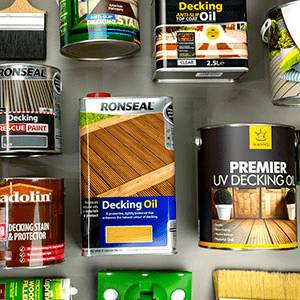Handrail Finish FAQ's
What is the best finish for a wooden handrail?
Interior handrails can be treated in a number of ways. If you're trying to match the colour to the floor or stair treads, staining the wood with a wood stain is usually the best course of action and then sealing with a wood wax, wood oil or varnish, if necessary.
Exterior handrails are a similar story, using an exterior coloured woodstain such as Sadolin Classic Wood Protection or Osmo Natural Oil Woodstain will not only colour the wood to match or contrast any surround wood but will offer protection from the elements and the inevitable finger marks.
What is the best way to stain an interior pine handrail to match the staircase?
Colour matching wood is one of the most difficult tasks. It may look the same, but different species of wood can have vastly different reactions to a wood stain, even in the same piece of wood. This is where test areas come into play. Wood stains such as Manns Classic Pine Stain have small tester pots available, helping you to do a suitable test area to help achieve the perfect match.
Can I use a wood oil on an Oak handrail?
Wood oils are just one way of effectively treating Oak hand rails. Whether it's a natural oil such as Tung Oil, Teak oil or Linseed oil, or a blended oil such as Danish oil. A more modern alternative that is quicker drying, requires fewer coats, is durable yet easy to maintain are the range of hard wax oils.
How do I stop my exterior Oak handrail going grey?
The best way to stop any wood from being bleached by the sun and going grey is to treat it with a product with dedicated UV inhibitors which absorb the harmful rays before it reaches the wood. One such product is Osmo UV Protection Oil Extra. This is available in a clear and a selection of attractive wood colours. They have been designed to act like sun-tan lotion for the wood. Although these products greatly slow the greying process, they will not stop it completely. They require regular maintenance and re-application every 18-24 months to get the best out of the product and to keep the grey away!
What is the best way of stripping paint from a staircase handrail?
If the paint on your hand rails is tired or loose and flaky, you might want to consider stripping them and refinishing with another paint to match the previous finish. The best place to start is with a traditional paint stripper like Paint Panther Paint and Varnish Remover or other paint stripper or remover. These are a viscous liquid, with a custard-like consistency and can be applied directly to the wood and left for a short amount of time, before being scraped off with a flat knife into a suitable container. This can be repeated as many times as necessary. Once all excess product is removed, a light sanding to smooth out all of the edges and remove the last small areas of old product and you are ready to go!
Another type of paint remover is PeelAway. It is poultice-like in consistency, so ideal for areas where drips might cause issues with surrounding areas. This product is available in two different formulas, PeelAway 7 for modern or water-based paints and PeelAway 1 for pre-1970's lead based paint. There may be occasions where modern, water-based paints have coated pre-1970's paints, so test areas are vitally important and the PeelAway 1 and 7 Sample Pack is a must try!
Disclaimer: Whilst every attempt has been made to provide product information that is as accurate as possible, it's important to clarify that trees and the wood that they produce can be affected by many factors. For example, the same species of tree grown in the same wood, even in close proximity, will be affected by age along with the amount of sunlight and water they receive. Other naturally occurring biological and environmental factors will also influence the density and grain of the wood as well as the moisture and oil content of the timber. No two trees are the same, meaning each piece of wood has the potential to look and react differently to the same wood finish. For example, product adhesion, colour variations, absorption rates and sheen levels. It is for this reason that we always strongly recommend carrying out test areas before starting any project


